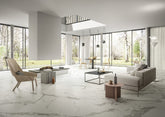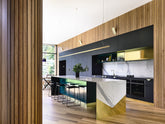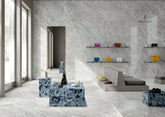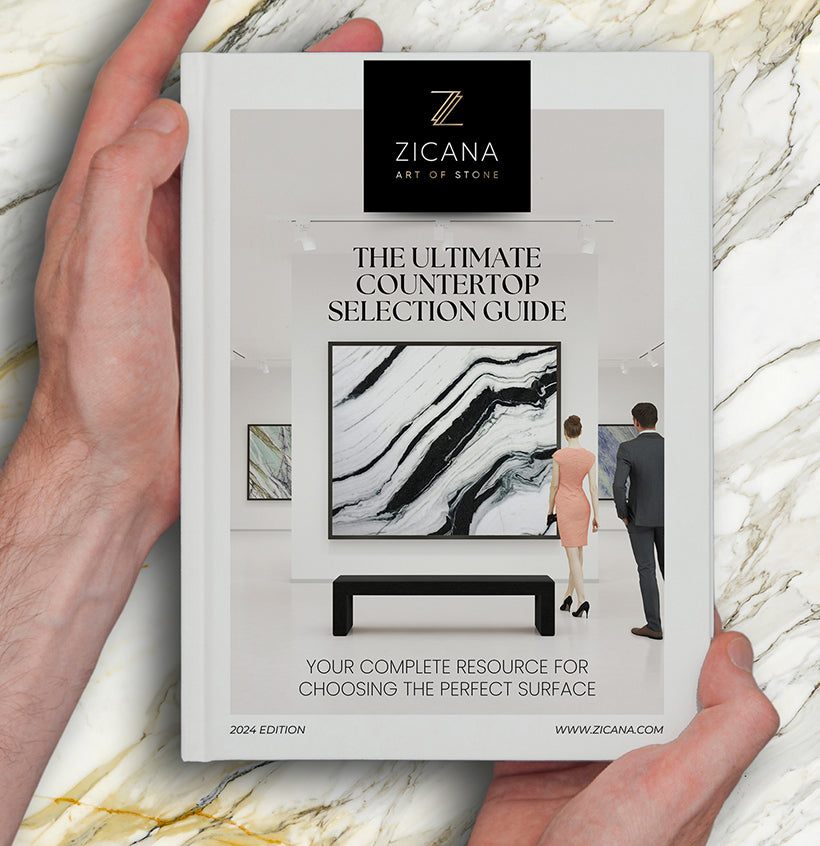Porcelain Slabs vs. Sandstone: Which Is Better for Luxury Spaces?
In the world of high-end design and architectural specification, material selection is more than an aesthetic choice. It is a declaration of style, lifestyle, and long-term value. When it comes to surfacing luxury interiors and exteriors, the question often arises: are porcelain slabs better than sandstone?
This comprehensive guide will walk you through the characteristics, advantages, and considerations of both materials to help discerning homeowners, architects, designers, and contractors determine which surface offers the best investment for a luxurious space.
And if you're ready to take the next step with confidence, explore Zicana Boutique’s curated Exclusive Offers Collection and enjoy a welcome gift with our limited-time offer: Use Promo Code WELCOME100 for $100 off any order over $1,000.
Understanding Porcelain Slabs: The Pinnacle of Performance
Porcelain slabs are large-format engineered surfaces composed of refined clay and mineral powders fired at incredibly high temperatures. Unlike ceramic tiles, porcelain slabs offer superior density, lower porosity, and remarkable design versatility. They are ideal for both indoor and outdoor applications, offering a seamless, contemporary aesthetic with minimal grout lines.
- Ultracompact durability: Scratch-resistant, heat-tolerant, and non-porous
- Wide range of designs: From marble and stone replicas to metallics and industrial concretes
- Fade-resistance: UV-stable for exterior use
- Low maintenance: No sealing required and easy to clean
Zicana Boutique features elite porcelain brands such as the Raphael Porcelain Collection, Laminam Collection, and Fiandre Collection, each offering exquisite design and elite manufacturing precision.
Sandstone’s Natural Allure: A Classic Material
Sandstone is a sedimentary rock formed over millions of years, celebrated for its natural beauty and honed earthy tones. Frequently used in landscaping, cladding, or paving, its tactile texture and grain make it a beloved material for traditional and Mediterranean-inspired spaces.
- Textural depth: Organic, granular surface ideal for rustic or antique aesthetics
- Earth-toned palette: Warm creams, browns, golds, and reds
- Moderate density: Suitably durable but not impervious to wear
- Requires maintenance: Periodic sealing recommended to avoid staining and water damage
While sandstone adds undeniable charm, it can lack the performance features demanded by modern luxury interiors—particularly for kitchens, bathrooms, or outdoor kitchens where moisture exposure is a concern.
Comparing Aesthetics: Modern Minimalism vs. Natural Warmth
In terms of design sensibility, choosing between porcelain and sandstone often reflects broader themes: contemporary versus organic, precision versus poetry. Porcelain slabs deliver hyperrealistic interpretations of natural stone, concrete, and even woodgrain, allowing designers greater creative scope across both vertical and horizontal applications.
Sandstone, on the other hand, exudes a softer, more rustic authenticity ideal for estate-style villas, historical renovations, and Mediterranean courtyards. When deciding are porcelain slabs better than sandstone for a luxury setting, one must weigh aesthetic continuity, personal style, and the permanence of the surface material.
Durability and Maintenance: Porcelain Takes the Lead
When it comes to surface strength under pressure—literally—porcelain is unmatched. Thanks to its non-porous structure, it is impervious to moisture, bacteria, stains, and fire. Sandstone, being a softer natural material, is more vulnerable to weathering, erosion, and chemical degradation over time.
For high-traffic, high-stakes luxury spaces—think chef’s kitchens, spa-like bathrooms, and rooftop patios—porcelain outperforms with little ongoing effort. There’s no need for sealers or harsh chemicals, aligning perfectly with modern, eco-conscious sensibilities.
If you're considering porcelain for your next statement installation, begin with our handpicked selections in the Porcelain Slabs Collection. Don’t forget to Use Promo Code WELCOME100 for $100 off any order over $1,000.
Design Flexibility and Applications
Porcelain’s lightweight composition and range of thickness options open up design possibilities across walls, floors, countertops, furniture, and even facades. At Zicana, we even feature porcelain as part of sophisticated Furniture & Decor Collection and Tables & Consoles.
By contrast, sandstone is rarely used vertically because of weight and porosity concerns. Its applications lean toward hardscaping, pathways, and fire pits, making it more limited in terms of contemporary interior surface design.
Environmental Outlook: Sustainability and Efficiency
Porcelain slabs are produced in controlled environments using recyclable materials with minimal water absorption. Many lines featured in our portfolio, including Florim Collection, are certified sustainable, making them ideal for LEED-certified or eco-conscious building projects.
While sandstone is all-natural, its high weight, porous nature, and need for sealing or replacement over time result in a higher lifecycle environmental burden. For clients seeking net-zero design, porcelain provides long-term environmental and cost benefits that are hard to rival.
What are the pros and cons of porcelain slabs vs sandstone?
Porcelain slabs are highly durable, stain- and scratch-resistant, and extremely low-maintenance. They’re ideal for modern interiors. Sandstone, while beautiful and textured, tends to be softer, requires sealing, and is best suited for rustic outdoor designs or low-traffic areas. Porcelain outperforms in longevity, hygiene, and flexibility.
Can porcelain slabs mimic the look of natural stone?
Absolutely. Today’s advanced inkjet printing technology allows porcelain to replicate marble, granite, travertine, and even the texture of sandstone. Explore realistic options in our Sintered Stone Slabs Collection for stunning alternatives with no-compromise performance.
Is sandstone suitable for indoor countertops?
While not impossible, sandstone is prone to staining, etching, and moisture absorption, which makes it a poor choice for high-use surfaces like kitchen counters or bathroom vanities. For homeowners seeking natural texture indoors, consider our Limestone Slabs Collection for a more stable indoor alternative.
Where can I use porcelain slabs in a luxury home?
Porcelain slabs are ideal for kitchen countertops, bathroom vanities, shower walls, flooring, fireplace surrounds, custom furniture, and even feature walls. Use our Made-to-Measure Custom Countertops service to create bespoke solutions customized to your space.
Making the Right Choice for Your Next Project
So, are porcelain slabs better than sandstone? For most luxury environments requiring sophisticated finishes, long-term durability, superior hygiene, and modern elegance—the answer is a confident yes. However, sandstone still has its charm when applied thoughtfully in Earth-inspired designs or heritage architecture.
At Zicana Boutique, we believe every selection should honor your design vision while elevating the function of the space. That’s why we offer both artisanal natural stone and high-performance engineered surfaces for every aesthetic.
Explore the spectrum of our high-end stone surfaces today. Whether you're curating a one-of-a-kind kitchen, building custom furniture, or reimagining your outdoor retreat, Zicana Boutique offers unmatched selection, knowledge, and style potential. Indulge in our Exclusive Offers Collection and save $100 on your next exquisite order.



















